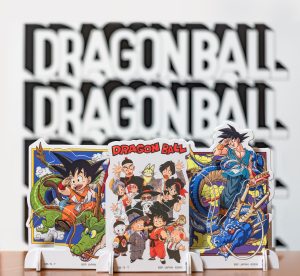The recent death of Akira Toriyama, the creator of manga series Dr. Slump and Dragon Ball, drew heartfelt and teary-eyed reactions from around the globe. State leaders, such as French President Emmanuel Macron and Chinese diplomat Mao Ning, expressed praise and condolences for the passing of the beloved artist, while fans held vigils and mourned online and in person.
The outpouring of praise for Toriyama, in addition to the recent Academy Awards honors for Takashi Yamazaki’s “Godzilla: Minus One” and Hayao Miyazaki’s “The Boy and the Heron” and the success of “One Piece” on Netflix, have led commentators to call attention to Japan’s soft power. Yet, one may mistakenly credit the high praise for Japanese culture to the government’s decades-long “Cool Japan” strategy. The response to Toriyama’s death, however, should make clear that effective cultural diplomacy ultimately rests on the shoulders of creatives and artists looking to tell a good story.
Toriyama’s Dragon Ball manga series spawned numerous anime, films, video games, and merchandise, and has been the cornerstone of contemporary Japanese pop culture. Other famous manga artists have drawn inspiration from Dragon Ball in their works, such as One Piece and Naruto. Toriyama also had a direct hand in the artistic direction of other famed franchises, like Dragon Quest and Chrono Trigger. Hence, before Dragon Ball made its way to the wider world, it had already cultivated a rich and diverse pop culture environment at home.
Toriyama himself drew inspiration from the classic Chinese novel “Journey to the West” and Chinese action stars, such as Jackie Chan, for the Dragon Ball series. Rich culture can cross borders without much government intervention.
Dragon Ball Z, the sequel to Dragon Ball, was the first foray into anime for many Americans. After it premiered in the United States in 1996, children across the country woke up early on Saturday mornings to watch Son Goku – an alien from Planet Vegeta – and his friends defend Earth from a host of would-be world destroyers. Children eagerly tuned in each week for the next episode of Dragon Ball Z while also being exposed to other anime series that were part of the programming block, such as Sailor Moon. These anime replaced decidedly more Western cartoons that dominated the morning cartoon hour, such as King Arthur and the Knights of Justice.
Yet, it was not until Cartoon Network packaged several programs into Toonami, an anime-themed block, that the Japanese distinctiveness of the shows became obvious to viewers. That is, fans loved the characters and story first, and then they came to become interested in Japan.
The story of Goku – an outcast immigrant whose happy demeanor, resilience, and unrelenting willpower allow him to overcome the most difficult obstacles, find love, start a family, and build unbreakable bonds of friendship in an adopted land – is as American as it is universal. The similarities between Goku and DC Comics’ Superman, another immigrant hero fighting for peace, are readily apparent. Beyond the universality of Dragon Ball’s message, minority groups in the United States and worldwide were particularly drawn to the show, notably Black and Latin American communities. Japanese soft power has shaped the places where it has spread.
Soft power, a concept coined by Harvard political scientist Joseph Nye, argues that culture and values can attract, persuade, and shape the behavior of other states. It is an amorphous concept that is hard to quantify and has a limited track record – can we really say that love of anime leads to favorable foreign policies or trade agreements? Maybe Dragon Ball Z will not disrupt the balance of power in East Asia. Still, Toriyama’s work compelled the Global Times, a Chinese Communist Party-owned newspaper famed for its hawkish stances, to run a story featuring Chinese netizens’ adoration for Toriyama and Japanese cultural goods.
When measured in economic terms, the impact of soft power is more apparent. Dark House, an American comics distributor, has stated that although manga is only 1 percent of its output, it generates 60 percent of its revenue. Other popular Japanese cultural goods, such as Studio Ghibli films and Nintendo’s Pokémon franchise, to name a few, have found cult-like and mainstream success around the world. “The Super Mario Bros. Movie,” based on the legendary game designer Shigeru Miyamoto’s Mario character, grossed over $1.3 billion, and a sequel has been greenlit for 2026.
These astronomical numbers may be why governments have taken a heavy hand in promoting soft power. Ironically, though, such efforts can do more harm than good. The South Korean government has leaned heavily into its cultural exports, often called the “Hallyu Wave.” Korean pop has been immensely successful but has stumbled whenever the government has sought to over-regulate the industry. China has promoted its culture through its Confucius Institutes but has drawn considerable backlash for undemocratic practices.
The government of Japan caused an unforced error of its own by overengineering the 2020 Olympics Opening Ceremony, resulting in scandals and a lackluster program that cut much-beloved music, artists, and characters. The government has similarly sought to put its stamp on how Japanese cultural goods, like sushi and wagyu, are presented and consumed overseas.
Governments keen on bolstering soft power should instead focus their attention on the issues holding back the arts at home. Toriyama’s untimely death has brought renewed attention to more structural issues plaguing the creative industries, such as overwork, overreliance on individual talents, low pay, and even labor shortages. The solution to these issues will not require an overbearing government hand to determine what is and isn’t soft power, but support for the talent of the nation to be as creative as possible, whether through labor rights reform or new immigration policies.
The passing of Toriyama leaves a giant hole in the hearts of the millions of fans, but one can be confident that it can be filled with his enduring stories, and the new art produced by the next generation of creatives inspired by Dragon Ball Z.

































